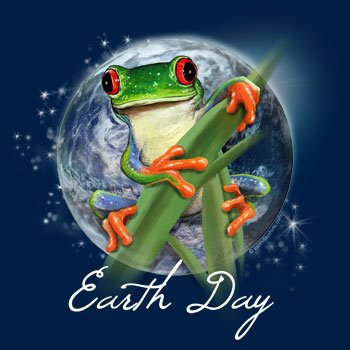1. Earth isn't flat, but it isn't perfect round either. The variation in size is way too small to be seen in pictures of Earth taken from space so it looks nice and perfectly round. But it really isn't.
2. The days are getting longer. No, not just because it's spring, although that is true. When the earth was formed about 4.6 billion years ago, the days were approximately 6 hours long. By 620 million years ago, days had increased to 21.9 hours. Today, the average day is about 24 hours long. That means that every 100 years, days gain 1.7 milliseconds. Sorry, but it won't be enough to help with your busy schedule!
3. Earth's gravity isn't uniform. If earth were a perfect sphere, the gravitational pull would be the same everywhere. But since the earth's surface is bumpy, and with water flow, ice drifts, and movement of the tectonic plates beneath the Earth's crust all lead to changes in gravitational pull. This causes gravity to be stronger in places like the Himalayas and, conversely, dips in the land caused by glaciers millennia ago, cause the gravity to be somewhat less strong.
4. A whopping 96.5% of all water on Earth lies in our four oceans. At any given time, though, 0.001% of water is floating above us in the atmosphere. If all that water fell at once, the entire planet would receive only 1 inch of rain!
5. Most freshwater is in ice. Only 3.5% of Earth's water is freshwater with few dissolved salts. Over 68% of our freshwater is locked up in ice and glaciers. Another 30% is in groundwater.
6. Some water may have come from comets. The rocky material that formed Earth contained some water but that doesn't account for all the water we see today. Comets are made mostly of water ice and it's entirely possible that these comets made regular "water deliveries" to Earth. it would have taken a lot of comets to fill our oceans but comets could well have made big contributions. Thanks, guys!
7. Coral reefs are busy underwater ecosystems. Some humans call them the "rainforests of the sea." Corals look like rocks but they are actually animals. They have hard calcium carbonate skeletons, just like clams. And they form a base for lots of other animals to live. Corals reefs are beautiful and very fragile; they are easily affected by pollution.
8. Freshwater ecosystems have rare species. Ponds, lakes, streams, and rivers are home to lots of species that can't live in salt water. many kinds of frogs (like yours truly), fish, insects, and other microscopic organisms such as amoebas, call these places home. And did you know that in Asia and South America these freshwater ecosystems are home to a rare breed of river dolphins? In North America, you'll find otters, and beavers call freshwater home in both North America as well as Europe. Australia has platypuses. All these rare and lovely creatures rely on freshwater to survive.
9. Boreal forests are home to lots of trees. Much of North America, Europe, and Asia is considered temperate...not too hot and not too cold, with distinct seasons. They lie between the Arctic and the subtropics so the climate makes this region the perfect place for many different kinds of trees. Pine, spruce and larch stay green all year and have needles instead of leaves. Bears, porcupines, and even eagles call these forests home.
10. Half of the world's species live in tropical rainforests. The tropical rainforests near the equator are always warm and wet. These key ingredients are needed for lush plants and trees. half of all the world's species call these forests home. That makes for a busy ecosystem! Many of these creatures can only be found in these tropical rainforests...and nowhere else on earth. Did you know that plants in these tropical rainforests produce 40% of Earth's oxygen?
I hope you enjoyed these Earth Day facts. Every April 22 those humans (and all other critters) who are passionate about restoring and preserving the Earth's health come together to celebrate Earth Day. The very first one was celebrated in the United States in 1970. Today, the Earth Day movement has spread across the world and it is now known as International Earth Day. It has grown into the largest secular observance in world, reaching more than 1 billion people annually.
I'm proud to be a part of the celebration and do what i can to help protect our planet. I hope you'll join me this year and participate in an Earth Day event near you.
Happy Earth Day, everyone! See you back here on Monday.
Peace.

 RSS Feed
RSS Feed